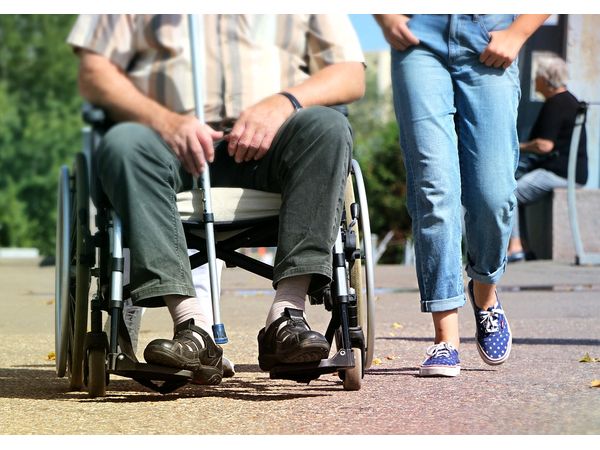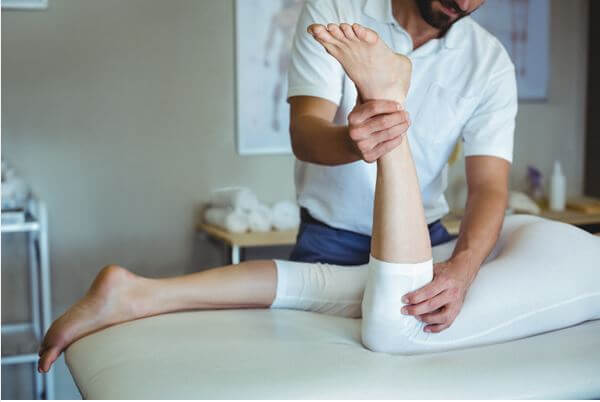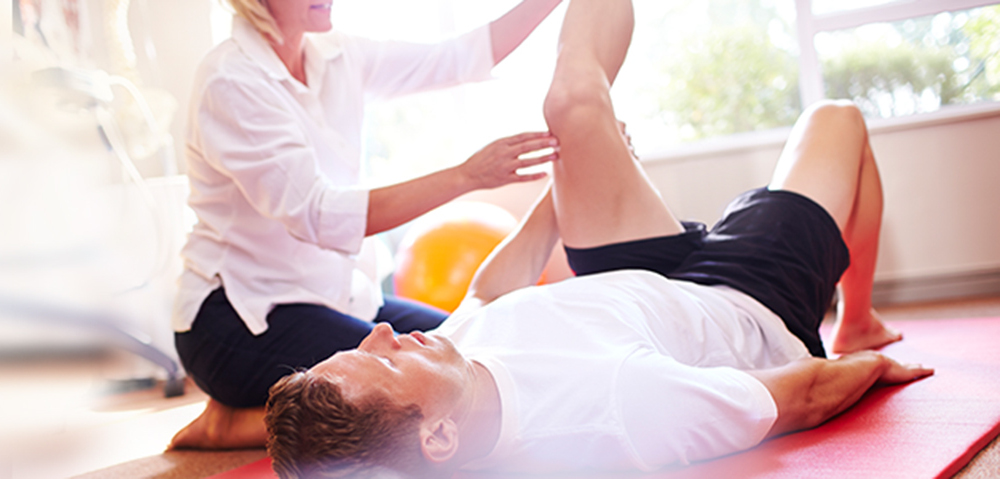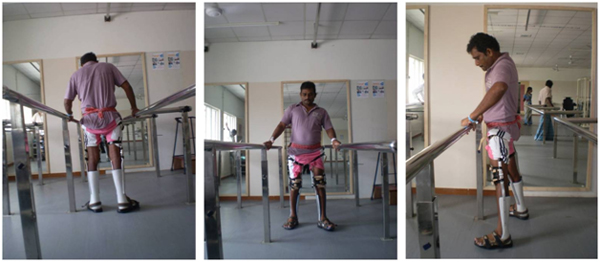Best Paralysis Treatment Specialist At Home In Ahmedabad :
What is Paralysis ? :
Paralysis is the loss of Motor / muscle function or Joint Movement Control in part of body. It happens when something goes wrong with the way messages pass or connection between your brain and muscles. Paralysis can be complete or partial. It can occur on one or both sides of your body or any single part of Body. It can also occur in just one area, or it can be widespread. Paralysis of the lower half of your body, including both legs, is called paraplegia. Paralysis of the Both Upper Limb And Lower Limb is Called quadriplegia And One Part Of The Body is Called Hemiplegia And Single Part Of Body is Weak Or Paralysed also Called Nerve Injury.
Which Are The Reason That are Cause Paralysis ?
Cause of Paraalysis:
Cause Are Variable According To Diagnosis :
- High Blood Pressure
- Uncontrolled diabetes
- Alkoholic People More Prone.
- Sedantary Life Style
- Obesity
- High cholesterol Diet
- Trauma / Injury / Fall on Head/ Spinal Cord / Or Fracture With Nerve Injury
- Brain or Spinal Cord Cancer
- Thyroid Disease
- Tumour
- Hereditary Disease
- Poisons/Toxins
- Idiopathic
- Medication Side Effects
Type Of Paralysis :
There Are 2 Main Type Of Paralysis .
- Upeer Motor Neurone Type Of Paralysis
- Lower Motor Neurone Type Of Paralysis
Upper Motor Neurone Type Of Paralysis :
Hemiplegia, Paraplegia, Quadruplegia , Cerebral Palsy Are Example Of Upper Motor Neurone Type Paralysis. Anything That Are Related Brain And Spinal Cord Injury Or Disease May Cause Paralysis Called Upper Motor Neurone Paralysis.
Lower Motor Neurone Type Of Paralysis :
Quada Equina Syndrome, Brachial Plexus Injury, Muscular Dystrophy And Bell’s Palsy Are Example Of Lower Motor Neaurone Type Paralysis, Anything Like Injury Or Disease My Cause Damage to Nerve Root Or Nerve , Or Muscle Are Known as Lower Motor Neurone Type Of Paralysis.
Paralysis Also Classified According Which Body Part Involved.there are as per Below.
- Monoplegia
- Hemiplegia.
- Paraplegia
- Quadruplegia
- Nerve Palsy
Symptoms of Paralysis:

- Loss Of Partial Or Complete Movement Control
- Muscle Weakness Complete Or Partial
- Loss Of Sensation
- Loss Of Bladder / Bowl Control
- Depression
- Spasticity Or Flaccidity According To Diagnosis
- Loss Of Balance
- Difficulty in Walking
- Difficulty in Day To Day Activity.
- Loss Of Emotional Control
- Higher Function Like Vision , Hearing , Speech May Affected
- Difficulty in swallowing
- Sometimes Memory Also Affected
How Paralysis is Diagnosed?
Investigation:
- Investigation Are Dependent on Diagnosis, Accordingly Examination Of Patient, History, Symptom’s Are Require.
- MRI
- CT Scan
- EMG/NCV Report
- Blood Report
- Enzyme tests
- Muscle biopsy
How Paralysis Treatment are done?
Best Doctors Require For Paralysis is Neurophysician, Physiotherapist , Occupational Therapist, Speech Therapist, Psychologist, Physician, Neaurosurgeon And Sometimes Other Specialist Are Also Required According Symptom And Associated Other Disease.
Medical Treatment:
Medical Treatment Are Variable According To Diagnosis, Primary Treatment is To Control Blood Pressure, Control High Sugar Level, And Other Symptomatic Treatment Are Important, Sometimes Emergency Surgery Also Require.
Physiotherapy treatment :

Physiotherapist Play Important Role in Paralysis Patient By Restoring Movement, Muscle Power, Balance Training And Gait Training, treatment Of Physiotherapy Also Variable According To Diagnosis, But Most Common Treatment Are As Per Below :
- Strengthening Exercise Of Weak Muscle
- Stretching Exercise Of Tight Or Spasticity Muscle
- Balance Training
- Gait Training
- Electrical Stimulation
- Rehabilitation Training
- Use Of Neurological Technique eg. Rood’s Approach
- Motivation
- BioFeedback.
Primary Goal :
- Maintaining Range Of Motion.
- Restore Movement/ Or Strengthen Muscle according MMT/Voluntary Control
- Improve Balance.
- Reduce Spasticity/ Tight Muscle
- Use Of Rehabilitation Principle.
- Gait Training
- Use Of Physiotherapy Modalities/Equipment.
- Bed Sore Management.
- Chest Physiotherapy.
- Correct The Deformity.
- Motivation Of Patient.
Maintain Range Of Motion(R.O.M.) :
Range of Motion is Easy by simply giving passive movement of body part one a day is enough to avoid joint stiffness and maintain R.O.M, if patient is complete bed-ridden then sometimes 2 time exercise is required.
Patient with paralysis which have not taken treatment properly leads to joint stiffness in- reduce joint R.O.M and require proper Range of motion exercises.
Restore Movement/Strengthen Muscle :
#Restore Movement is Main Goal of Physiotherapy Treatment. In hemiplegia or stroke related patient where upper motor neurone type paralysis occurs in which brain lost movement control , so physiotherapist are uses various neuro technique/Approach to restore movement. e.g. Rood’s approach, Bobath approach, PNF Technique.
#Strengthening Exercise are useful in lower motor neurone type of paralysis.Manual Muscle Testing (MMT) are done from 0 to 5 Grade and according to which strengthening Exercise are required. In Nerve Palsy Physiotherapist also use electrical stimulation to strengthen muscle and rarely use Russian current.
Balance Training :
Balance Training Exercise.
Loss of Balance are common in paralysis patient, so according assessment of Balance sitting, standing and walking balance training are prescribed.
Main type of Balance are
- supported Balance
- static Balance
- Dynamic balance,
According to which balance grade treatment of balance is required. e.g. if patient have supported standing balance with walker physiotherapist try to less supported balance and guide to patient how to improve balance by reducing support and giving training with stick which are less supported as compared to walker. gradually to remove support and try to stand without stick.
Reduce Muscle Spasticity/Tightness/Deformity :
Stretching Exercise in Paralysis.

Spasticity Treatment are important part of Physiotherapy Rehabilitation programme. Physiotherapist are doing ashworth’s scale of spastic muscle, according which stretching exercise and weight bearing activity treatment are required.

Positional stretching exercise and long stretching exercise with 10 seconds to 30 seconds hold with joint compression-traction are best way to reduce spasticity. Earning Morning stretching exercise and 3 times a day is so important in removing spasticity.
Tightness are common in paralysis due to inactivity of muscle, which reducing muscle property and stretching exercise are useful in paralysis patient.
Deformity Correction :

Deformity Also common in paralysis mainly due to spasticity of one group of muscle, Body parts moves mainly in flexed position so braces/orthosis play important part in removing muscular deformity.
Gait Training in Paralysis :
Gait Training in Paralysis

Paralysis patient are unable to walk, as a discussed earlier lower limb movement restored or strengthen enough to stand and walk, require proper gait training exercise. Initially use of walker, stick and other supporting equipment to help walking. Balance Training is Also Part of gait training.
Use Of Physiotherapy Modalities/Equipment :
Physiotherapy Modalities eg. Electrical stimulation (ES) are so important mainly in Nerve injury. Nerve Injury patient require first RD Test According to which IG Currunt (Intermittent Galvanic) and SF Currunt (surge faradic). SD Curve are important for Progression chart.
Bed-sore Treatment :
Paralysis Patient which are completely patient which are bed-ridden are big chances of developed bed-sore, Physiotherapist guidance to use air-bed/water bed , change position of patient at every 2 hours are required. if Bed-sore is developed then use of UVR/LASER treatment is useful.
Motivation Of Paralysis Patient :
Depression are common in paralysis, Physiotherapist are explain the condition and outcome of the physiotherapist treatment are useful to motivate the patient.
Other Related Article About Paralysis :


